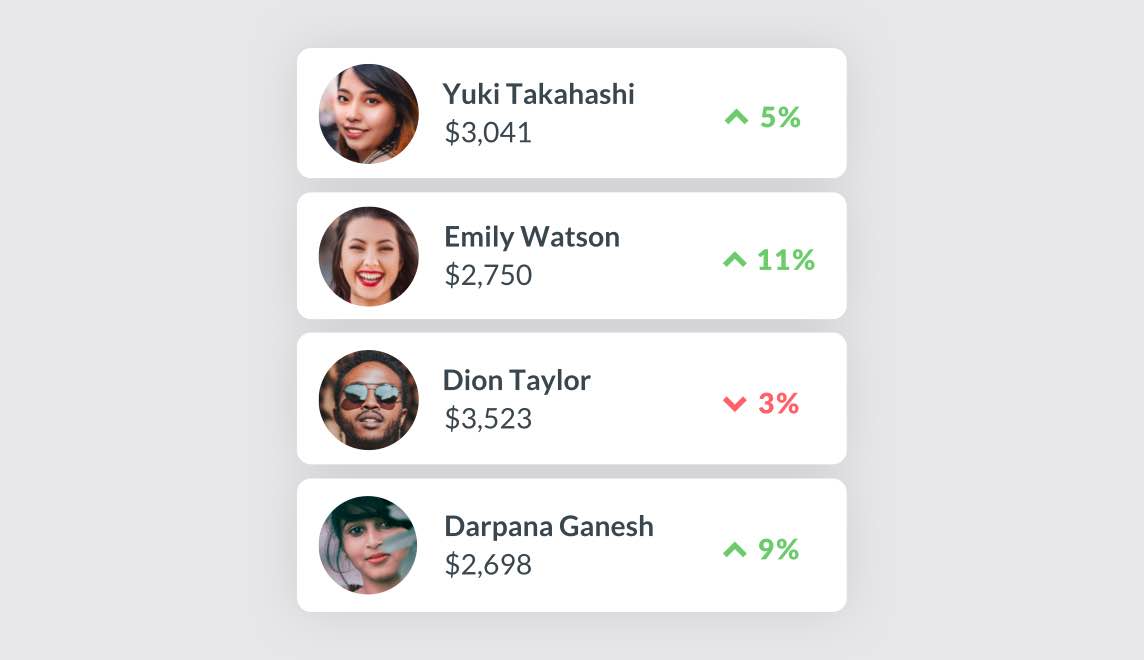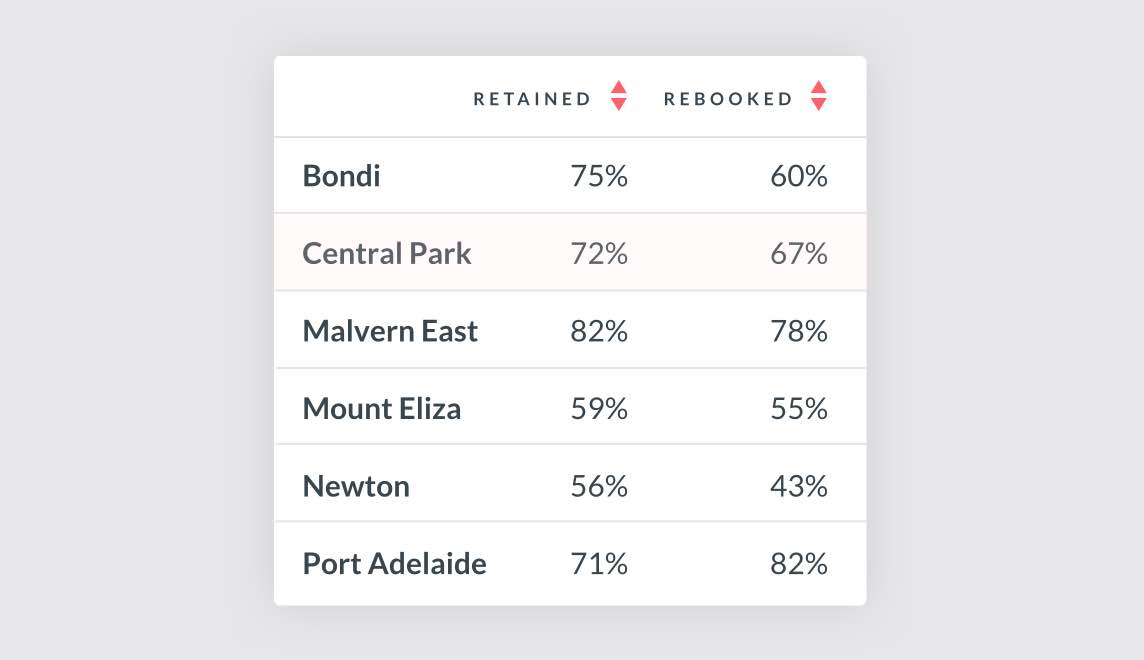How to Hire New Staff to Work in Your Salon

Ready to bring someone new into your business? This guide contains everything you need to know about how to hire staff in your salon.
Whether it’s your first employee or your 15th, it’s a good time to evaluate your business and make sure you’re prepared.
Knowing when to hire
Knowing how to hire starts with knowing when to hire. It’s the first step in building a solid team. Asking yourself a few important questions will let you know if you’re ready to grow.
Do you need to book more clients?
Hiring someone who can service clients is a sure way to increase revenue for your business. You can’t book clients you if you don’t have the available time. Think about what happens if you add another 40 hours a week of bookable time. How would that impact your bottom line?
Check your current availability in your appointment book. How full are you or your existing team already? Are you turning clients away? Do a quick productivity measure to see how many appointment spaces you have on average over the last 4 weeks. Of your available and sellable time, how much of it was full with appointments?
Here are two ways to check your productivity:
- Check your business dashboard to see how much time you have available. If you have less than 20% availability, it’s a good indicator that someone new on your team would help to increase productivity and open up appointment spaces for clients you’re currently turning away.
- Check your late nights and Saturdays to see how many weeks you’re booked up in advance. If clients call into your business and can’t get a late night or Saturday appointment next week or longer, it’s a sign that you might start to look for someone new.
Hiring another person to work with your clients is a big step. If your business feels like it’s hit a plateau, it’s definitely time to look at how to hire more staff for your salon.
Do you need help servicing clients?
Next, it’s time to review your service care levels. Are you struggling with your ability to provide a consistent level of service and care for your visiting clients?
If the levels of service are dropping during a client visit, not only are you compromising their experience, you’re running the risk of losing them as a client altogether.
If clients are backing up at reception or you’re keeping them waiting well over their visit time, it’s a clear indication you’d benefit from knowing how to hire someone in a customer care supporting role.
There are heaps of behind-the-scenes stuff that your business depends on:
- Laundry and housekeeping
- Shampooing
- Station set-up
- Nail polish removal
- Taking payments and rebooking clients
- Answering phones
Having someone else to take care of the little – but vital – details can help you stay on time, provide seamless customer service while not losing your sanity or your clients.
Do you need help growing your business?
Check your own daily and weekly activity, working schedule, or sanity. If you’re staying up late at night to pay the bills or pay the wages or plan next month’s marketing activities, is that the best use of your time? Are you flat out working in your business with clients and not spending enough time ON your business?
If you’re filled to the brim with clients all week then it’s time to consider employing someone new to smooth things over. Just because you had to do it all yourself when you started your business doesn’t mean you have to forever!
What do you love to spend your time on when working in and on your business? Do you love looking after your clients and making them feel great, and hate the need to do boring admin? Or are you motivated by coming up with plans to grow your business and develop your client base? If you’d rather be loving your clients than employing doing your admin, getting some help with accounts or wages/HR might be the right move.
By the books
Don’t panic about how you’ll pay the new wages or outsourcing fees too quickly. Yes, hiring a new person is a risk. But there’s only so much work you (and your staff) can do before you’ll stop seeing any increase in productivity.
If you employ someone to provide a service to your clients, not only will you relieve a little time for yourself (to pay the bills in daylight hours, maybe?) but they will soon enough cover their own wages with the sales they make.
If you employ a support role, you’ll not only improve your client retention by improving their experience, you’ll increase your sales income, too. Either by being able to service more people or by taking the time to book them back in more often or take the time to extend their service while in the business both leading to making more income for you and your business.
If you outsource or employ someone to manage your admin, HR or wages, you can offset the cost against the sanity you’ll gain from not having to work night, being more focused while at work and thus increase sales.
It doesn’t matter how you look at it – if you need help, then it’s time to know how to hire.

Recruiting and advertising
You’re ready to hire new staff for your salon. Except how do you actually find the good people? In this section we’ll go over some tips on how to hire new staff, from recruitment to shortlists. It may seem like a hassle, but if you put in the effort you can set yourself up for a painless, quick interviewing process, and find the employee of your dreams!
First thing we’d recommend is talking to your current staff, if you have any. They’ll have a really good idea of what kind of person is needed, in terms of skills, personality and experience level. They might even know someone suitable for the role. Even so, you’ll still want to advertise.
Use your website
Of course, you’ll want to post available positions on your website. A good place for it is usually under About Us > Join Our Team (or Careers, or whatever you want to call it).
It’s also a good idea to keep that page active even when you’re not looking for anyone. Keep an eye on the applications that come in while you’re not hiring and set aside the ones that strike your fancy. You’ll be a step ahead of the game when you’re actually ready to start hiring.
How to recruit
If you’ve hired for the hair or beauty industries, you know the competition for good talent is fierce. Recruiting isn’t easy, but it can land you some gems if you can put the effort in.
A lot of your recruiting can be done by reaching out to your community. This will depend on where you live, but there are heaps of places you can contact.
Here are a few options:
- Offer to speak at local high school career days.
- Contact local cosmetology schools and ask them to spread the word about your job opportunities (through posters, a newsletter, their website or social media pages).
- Offer to be a guest speaker or lecturer at your local cosmetology school or community college on anything you feel comfortable talking about – starting your own business, managing a team, salon best practices, etc.
- Attend any expos or trade shows that you can, and use the time to spread the word that you’re looking for staff. You never know who might have a great recommendation! Plus, building your profile by attending, doing demos or manning a table at the shows builds your profile so that prospective employees will know who you are and what you’re about.
It’s important not to limit yourself when setting up groundwork like this. If the nearest cosmetology school is in a big city a few hours away, it’s still worth trying to get out there if you can. Building relationships is always worth the effort, even if it doesn’t pay off until later.
How to write a job advertisement
Think really carefully about what you’re looking for when you write the ad. The more specific you are, the less likely it is you’ll get unsuitable people contacting you. What are the top five things you’re looking for? For example, good things to include in a front of house position ad might be:
- Great customer service.
- Great communication skills.
- Focused, organized, can-do attitude.
- Customer service hours (late nights or weekend work).
- Familiarity with POS.
Don’t be afraid to say what the job actually is! Describe the work they’ll be doing, the expectations you have of them, and what kind of environment they’ll be working in. If they’ll be working nights and weekends, be upfront about it.
Saving key information for the interview just wastes everyone’s time.
Here are a few things to keep in mind when putting your ad together:
- Use commonly understood terms: saying “hair wrangler” instead of “hair stylist” might be funny, but you’ll confuse a lot of potential talent who might just carry right on past your ad.
- Be specific about the experience level you want: saying you’ll consider all levels when you’re only offering an entry level salary will lead to frustrating conversations down the line.
- Try to communicate the culture of your workplace in the ad – is it relaxed and casual? Sophisticated and fast-paced? If you can work that into the ad, you’ll attract people who are interested in being a part of that work culture.
Where to advertise
There are so many places to advertise for positions that it can feel overwhelming! Don’t feel like you have to use all of them. Advertise in the places that will actually help you reach your perfect employee.
- Social media: If you’re followed by a lot of industry professionals, social media is a great tool to spread the word about your openings. If you’re only followed by clients though, this might be a waste of time.
- Industry job sites: Behind the Chair and Salon Employment have sections dedicated to salon jobs of all kinds, and it ranges from about$25/month to $70/month to post an ad.
- Job sites: These include Monster, Indeed, Seek and Craigslist. They aren’t always the first port of call for stylists but they’re still absolutely worth your time. These are also great places to advertise for front of house and salon manager positions.
- Schools: Back to the cosmetology schools and colleges we talked about earlier! They’ll usually have job boards where you can literally pin a flyer with your ad on it. Old-fashioned but does the trick – even if students don’t want to apply themselves, they can pass it on to someone who is qualified and interested.
Making a shortlist
In theory, your carefully worded ad has made sure that all your applicants are perfectly suited for the role. In actuality, life isn’t always that cooperative. You’ll have to whittle down a shortlist.
In our experience, it’s not a bad idea to include one or two ‘maybes’ in the interview process. An inexperienced youngster might not be what you’re looking for, but who knows? They could blow you away with their poise and positivity. Having a couple outliers in the mix keeps you from getting too focused on what you think you’re looking for.
Read our blog on ‘Should you hire young employees‘.
If this new staff member will be working closely with another one of your employees, consider asking them to review the applicants. Something might jump out at them that you’ve missed (you’re only human!) or they may have a different insight into what the role requires.
Your best choice may not have all the qualities or even skills that you want, but you have to believe that they can be moulded and trained to match your culture and your brand. – Faye Murray, Salon Coach
Creating a good culture
One of the key parts of recruiting is running a business that people actually want to work at. There are a lot of ways to do this, but there’s one thing to keep in mind during the hiring process – clients. It’s tempting to ask stylists to bring client lists with them from their old salon or spa; free bookings! Careful, you may be opening yourself up to your staff doing the same to you at a later date. You have to think about what kind of culture you’re building with your staff, and whether or not you want that to be a part of it.
So, you’ve got your list of candidates and you’ve asked them to come in for a chat. Next comes…

Interviewing
A lot of the interview process for service-based businesses like hair salons, spas, yoga studios, massage parlors, etc. is based around practical tests, and rightly so! If that’s the only thing you’re doing in your interviews, you’re missing out on a few easy ways to weed out potential problems.
Pre-interview logistics
Set yourself up for a smooth interview by planning ahead as much as you can. This has a dual effect: it will make you feel calmer since you aren’t fluttering around trying to find materials, and it gives your interviewee a positive impression. Remember, you might be interviewing them, but they will also be deciding if your place is the one for them. Here are some details to get ready the night before, if you can:
- Book out your time in your calendar so your employees know where you are and how long you’ll be unavailable.
- Print out the resume of the person to be interviewed. Double check on your calendar to make sure it’s the right resume! Highlight anything you wanted to ask them about.
- Write out list of questions. What didn’t they mention on their resume or in their cover letter that you need to know about? Are there any specifics about the job that you’re worried about them being able to handle?
- If your business doesn’t have an office space suitable for interviewing, scope out a nearby cafe to have the interview. Make sure it’s not too noisy.
Make sure you have a practical trial day set up in case they nail the interview. Get them into your business for a day to see how they work with your customers, your team and your environment. Bring in models or test clients who can give you feedback on the service they received from your potential employee. If at all possible, have everything you need for the trial ready to go — this saves time and ensures you don’t look disorganized in front of your interviewee.
Interviews can be intimidating on both sides of the table. On the interviewees side – they want a job! They have to appear
- Enthusiastic without being crazy
- Professional without being stiff
- Knowledgeable without being bossy
…all without sweating through their nice top.
On your side of the table, you have to get enough information from this person that you just met to decide whether or not they are the answer to your needs, all in 20-30 minutes! Are they responsible? Will they be good with new customers? Will they be able to sell in a friendly, unobtrusive way? Are they going to be easy to manage or will you have to constantly ride them?
A tour of the salon is a great place to start to settle nerves and you can point out all the great and special things about your salon and the team who work with you. – Faye Murray, Salon Coach
It’s probably not as bad as dating, but it’s no walk in the park. To get the most out of your interview time, here are a few questions to ask, and a few to avoid.
Good interview questions
- If you could have changed one thing about your last job, what would it be and why? This should give you some more information about why they left their previous job, and what they’re looking for from you as a boss.
- Tell me about a professional disaster and how you handled it, or what you learned from it. This is a really common question, and for good reason! Everyone’s made mistakes at work. An important part of professional growth is being able to handle disasters, admit to them, and take something away for the future.
- What types of skills do you want to work on? This will tell you not only where their weaknesses are, but how aware of it they are. Everyone has skills that need to be developed – if they say they’re good at everything, they’re either not very self-aware or uninterested in improving themselves.
- Is there a particular type of customer you work with often? This might sound like a strange question, but it will be helpful in some cases. If you have a tricky subset of clients, like children in salons or people recovering from injuries in massage studios, you’ll want to know if your potential employee has any specialties.
Bad interview questions
- Where do you see yourself in 5 years? Listen. People are probably going to lie to you if you ask this. Not because they are liars! But because 5 years is a long time – no one really knows what’s going to happen in that time. A lot of younger people will have a hard time even picturing that. Although you think this will tell you what the person’s goals are, they are going to cater their answer to what they think you want. It’s better to ask what skills they want to acquire if you’re looking for insight into the direction they see themselves going in.
- Why are you leaving your previous job? You might think this will give you insight into what they want out of their workplace or career, or what kind of employee they are, but there are better ways to do that. If they’re smart and professional, they won’t badmouth their previous boss no matter how awful he or she is. If they’re smart, they won’t mention that it’s often easier to get a raise or a promotion by moving jobs instead of waiting for one at your current workplace. If they’re smart, you want them! Asking this question pretty much assures you’ll just get the standard “I’m ready for new experiences under your fabulous guidance” and that’s just boring.
References
References can be a little tricky. But if you know what to ask, you can glean some valuable info about your potential new employee.
First of all is basic fact-checking. Did they in fact work at the places they said they did? Were they accurate about their responsibilities and accomplishments? This is also a good chance to check on any specific concerns you have. You’ll know best what these are – perhaps your interviewee is quiet and reserved, and you want to ask how they are with clients. Or maybe your previous employee was always late, and you want to avoid hiring someone with the same issue.
References won’t always be up-front with you about their former employees. Unless someone was absolutely horrendous, employers will probably err on the side of being positive – they won’t want to risk tanking someone’s chance at a job.
To get the dirt, you’ll have to ask some specific questions:
- Can you give an example of a mistake or difficult situation and how they handled it? This question works especially well if you’ve already asked your prospective employee Good Interview Question 2 from above. Now you can see if their analysis of their own skills was accurate.
- What do you think they most need to improve at? This gives you a chance to get a supervisor’s perspective on what their weaknesses are. You can see if it matches up with what they’ve said to you. Are their weaknesses ones that will work with your current team? If you’ve already got a team of loudmouth extroverts, maybe you need a quiet introvert for those clients who don’t want to chat during their appointments.
Although interviewing will have its wild-card moments, setting yourself up well is key. Whittle out unsuitable people with your advertising, prepare your questions and tests before-hand, and know what you’re looking for. Hiring might be a hassle, but it doesn’t have to take over your life.
Once you’ve brought on the new hire, or even multiple new staff, it’s important to realise your job isn’t done. In fact, the work has only just begun. No matter their level of experience, you now have to induct them into your business and get them started right.
Check out these other resources that will help you build the best team possible:
- Meet, Train, and Elevate: 4 Training Tips from ZING Coach Marie Drever
- Management Skills for Salon Owners
- Team Building in your Salon, with Larissa Macleman
Good luck!



